The upcoming ACS national meeting in San Diego has a CHED (chemical education division) session entitled Implementing Discovery-Based Research Experiences in Undergraduate Chemistry Courses. I had previously explored what I called extreme gauche effects in the molecule F-S-S-F. Here I take this a bit further to see what else can be discovered about molecules containing bonds between group 16 elements (QA= O, S, Se, Te).
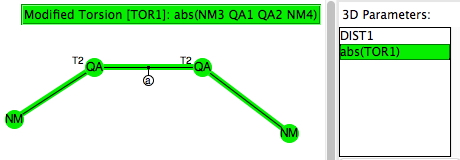
The search definition is shown above, with DIST1 being the QA-QA bond length, the QA-QA bond being acyclic, each QA bearing only two bonded atoms and NM being any non-metal. The first result shown is for QA=S.
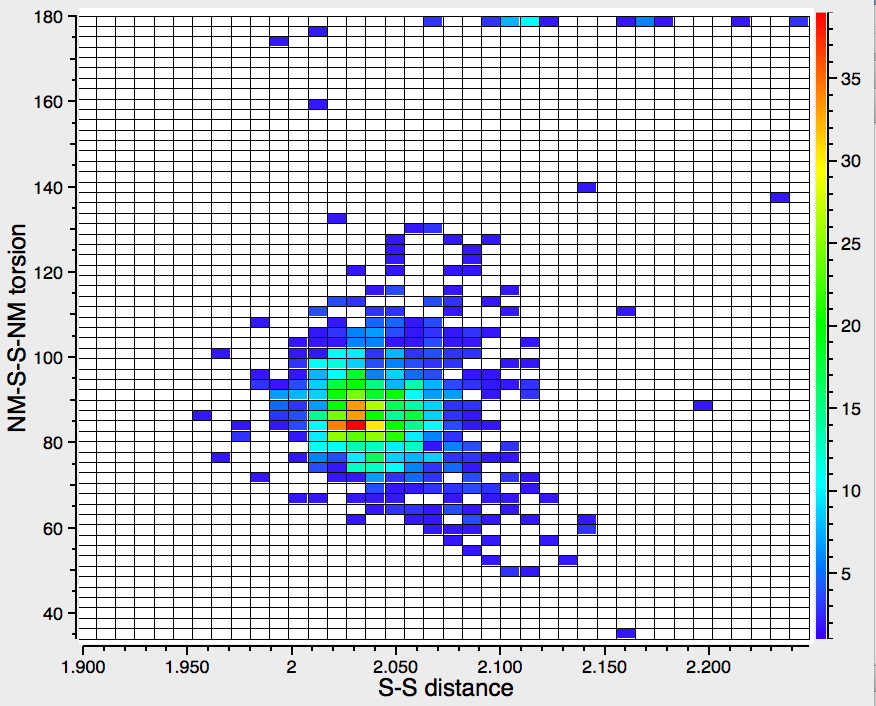
- The first discovery is that the most common torsion (red-hot spot) is about 90°, but there appears to be a statistically significant distortion towards longer S-S distances as the torsion deviates from this angle. For those who are so inclined it would perhaps be worth improving my term "appears to be" with a more formal numerical analysis of the distribution shown above and its significance. Any offers?
- The other discovery worth exploring is the number of occurences with an angle of 180°. With F-S-S-F itself (not a solid), I had previously noted that this angle actually represented a transition state in the torsion! So what might be inferred from these examples?
The next search includes a further constraint that the temperature the data was recorded at be <140K. This reduces vibrational "noise" and so should increase the significance. 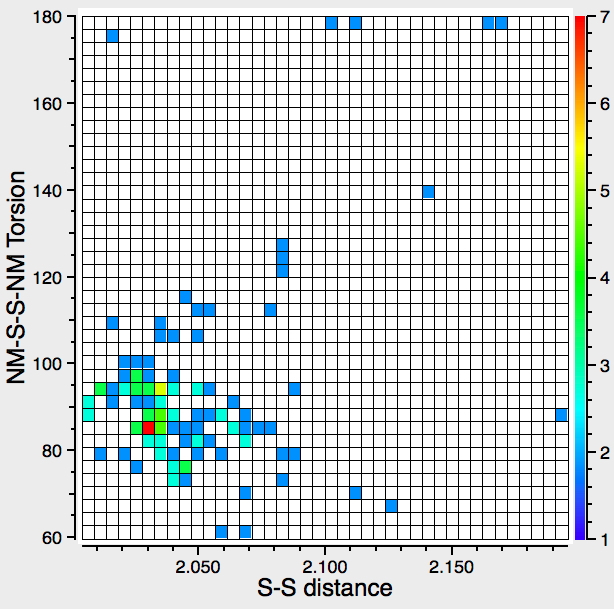
- Here we discover the same "V"-shaped distribution as before, possibly more significant statistically than the previous search. Again, a proper statistical analysis of the significance of this result is desirable.
The next search is for QA = Se or Te. 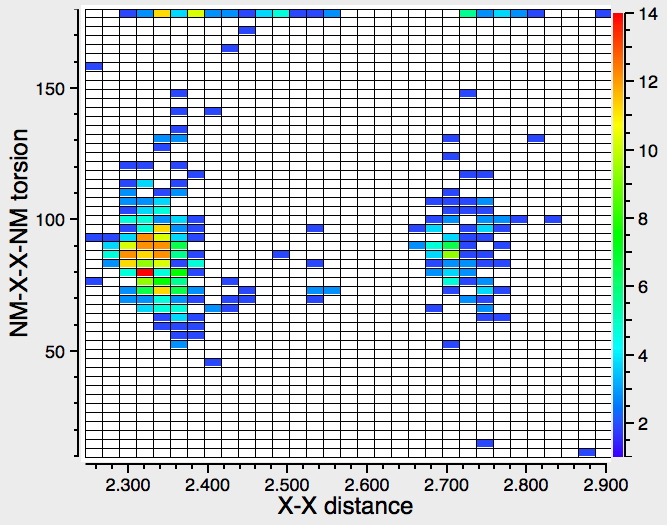
- The Se and Te distributions can clearly be distinguished, with a weak "V-shape" visible for Se, but absent for Te. Again, those hits at 180!
- There are a few instances "in-between" the two distributions, which appear to be Se-Te systems.
Finally, QA=QB = O.
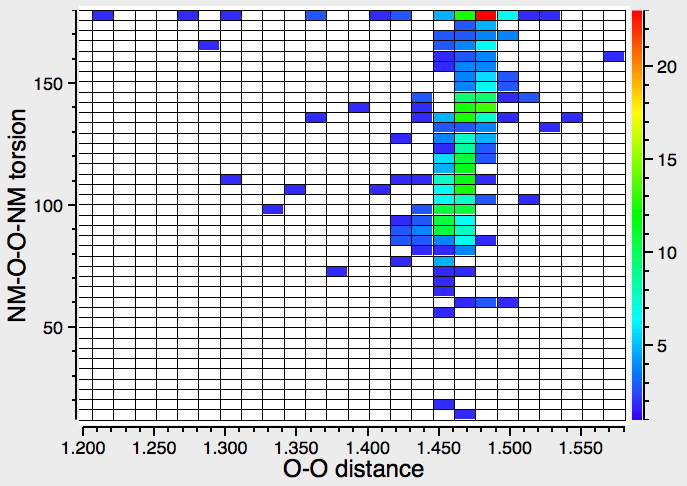
- The discovery here is the apparent absence of any "V-shaped" distribution.
- The hot spot now occurs at 180°, but with a tail down to 60° or less. Clearly, the definition of "NM" as any non-metal probably needs to be explored further for specific instances to see what influence the nature of NM has. NM for example could be another O, which might be a severe perturbation.
So here I have tried to tease out seven directions for further discovery. I am attending/presenting at the session I noted at the top and will report back on any interesting observations.
Acknowledgments
This post has been cross-posted in PDF format at Authorea.
Tags: City: San Diego, metal, non-metal, Singular spectrum analysis, Time series analysis